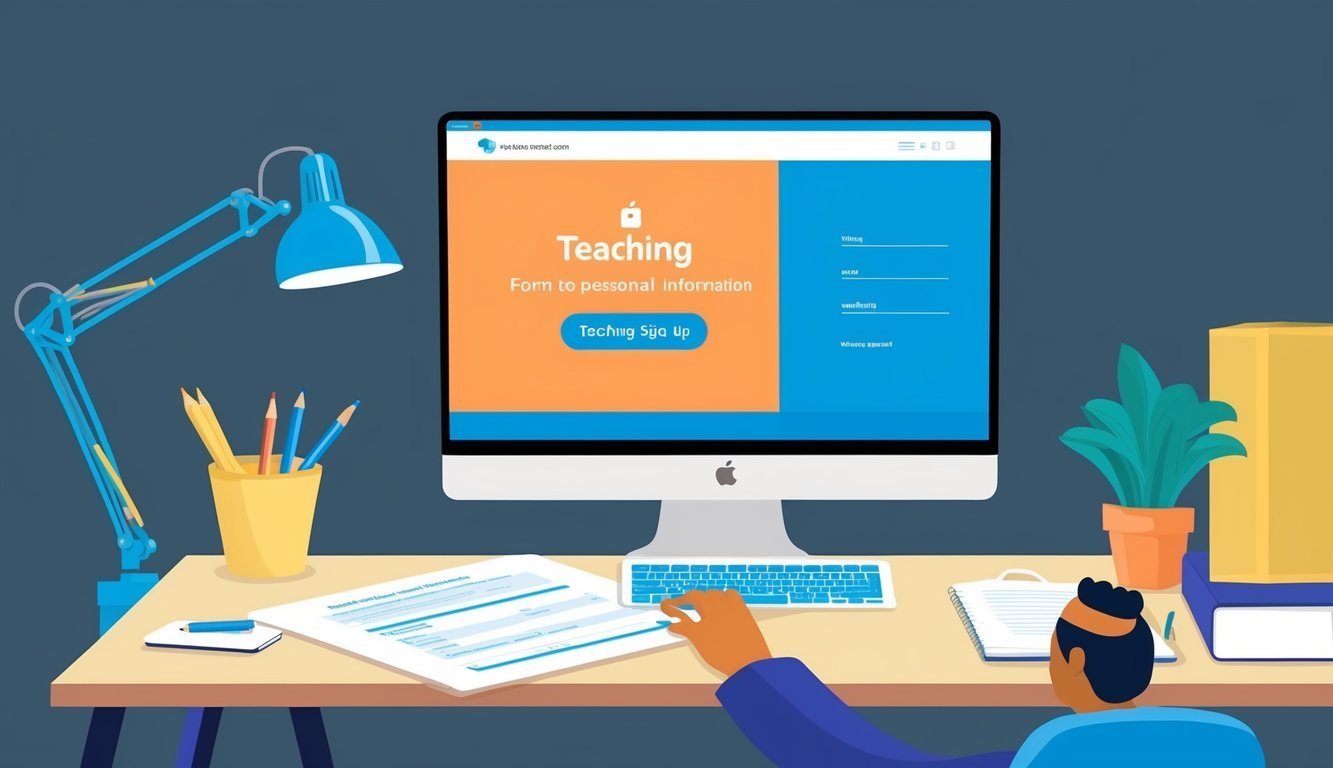Teaching can be one of the most fulfilling careers out there, especially if you have a passion for sharing knowledge and helping others grow.
If you’re considering taking the leap into teaching, there are various pathways you can follow. You could go the traditional route and earn a teaching degree, or you might decide to jump right into it with online tutoring platforms.

Lots of folks opt for the college route, spending around four years getting an education degree, complete with real student teaching experience.
But if you’re itching to get started sooner, there are quicker ways to dive in.
Some online platforms let you register as a tutor or instructor without any formal degree requirements.
Popular sites like Preply and Outschool make it super easy to set up a profile and start teaching whatever subjects you know best.
Whether it’s languages, math, music, or something else you’re passionate about, these platforms take care of a lot of the hassle, allowing you to focus on what you love: teaching.
Key Takeaways
- You can start a teaching career with either a college degree or by joining online tutoring platforms.
- Many sites allow you to sign up to teach without needing formal qualifications.
- Teaching subjects you’re passionate about can bring immense joy and fulfillment.
Getting Started with Teaching

Starting your teaching journey is exciting, but it does require a bit of preparation and commitment.
New teachers need to grasp the basics and set things up before stepping into the classroom.
Understanding the Basics
First off, you’ll need a bachelor’s degree.
This can either be in education or another field.
If it’s not in education, don’t sweat it—you’ll just need to complete a teacher prep program.
Next, you’ll want to gain some hands-on experience.
This often means some student teaching, giving you a chance to put your knowledge into action and see if this teaching gig really fits you.
It’s all about passion.
Teachers who genuinely love what they do tend to inspire their students and make learning an enjoyable experience.
Lastly, it’s crucial to know your subject inside and out.
Good educators can break down complex topics into easily digestible bits.
Setting Up Your Space
Your classroom should feel inviting and organized.
Think about how to arrange desks in a way that suits your teaching style—be it in rows, groups, or a circle.
Don’t forget about incorporating technology! A good microphone can be a lifesaver in larger spaces, and engaging videos can really liven up your lessons.
Create a cozy reading corner filled with comfy seating and a variety of books.
This way, you encourage students to read just for the joy of it.
Hang up inspiring quotes or student artwork around the room to give it a personal touch and keep motivation levels high.
And of course, don’t overlook a spot for supplies like pencils and paper, helping to keep things neat and saving you valuable time during lessons.
Enhancing Your Teaching Journey

As a teacher, your growth is continuous, and that means keeping up with learning, building connections with others, and staying on top of organization.
These key areas can help you make a bigger impact in your classroom.
Professional Development Opportunities
Boosting your skills is vital.
Teachers can access plenty of free online courses that cover topics like blended learning or fresh teaching strategies.
Plus, local workshops and conferences are fantastic for hands-on experience.
Don’t underestimate the power of social media! Joining teacher groups lets you swap ideas with your peers.
Following education blogs keeps you in the loop about the latest trends.
Many school districts also offer in-service days, providing targeted training on curriculum and tech.
If you’re feeling ambitious, pursuing advanced degrees or certifications can also set you apart.
Engaging with Students and Families
Strong communication lays the foundation for solid relationships.
Using apps to send quick updates to parents is a game changer.
Regular newsletters can showcase classroom highlights and upcoming events.
Hosting family nights brings parents into the fold, allowing them to see their kids’ work in real-time.
You can even provide tips for how they can support learning at home.
Ever think about student-led conferences? They let students show off their progress, boosting their confidence while keeping families actively involved.
Don’t shy away from feedback! Surveys can help you discover what’s going great and what might need a little polishing.
Building a supportive classroom community takes time but pays off beautifully in student success.
Organizing Your Schedule
A well-thought-out calendar is crucial when juggling all your teaching responsibilities.
Digital tools make it easy to track lessons, meetings, and grading deadlines.
Plus, color-coding can help you spot conflicts at a glance.
Set aside time each week for prep—keeping lessons fresh is key! Be sure to block out time for emails and phone calls to parents, too.
To-do lists can help you prioritize tasks, and breaking larger projects into smaller pieces makes them feel less daunting.
Don’t skimp on breaks and self-care! You’ll recharge much better, giving you the energy to pour back into your students.
Sharing calendar access with your support team is a smart move to keep everyone on the same page.
Frequently Asked Questions

Getting certified to teach involves a few essential steps, which can differ based on your location and the type of teaching role you’re pursuing.
What are the steps to get certified for teaching online?
For online teaching, you generally need a bachelor’s degree.
You might also have to complete a teacher preparation program, with many offering online options.
Also, be prepared to pass a basic skills test, typically covering reading, writing, and math.
What’s the process for obtaining a teaching license in Colorado?
To land a teaching license in Colorado, you’ll need that bachelor’s degree and a completed teacher prep program.
Expect to pass subject area tests, demonstrating your knowledge in the specific subjects you want to teach.
How can one become a teacher in Colorado if they already have a bachelor’s degree?
If you already have your degree, alternative certification programs are worth considering.
Designed for career changers, these options typically involve completing education coursework alongside student teaching.
Some even allow you to teach while you’re working on your license, giving you valuable hands-on experience.
For a broader look at educational opportunities, you might want to check out how to sign up for trade school.
It’s all about finding the right fit for your career goals.
What’s the timeline for getting a teaching certificate around here?
The timeline for securing a teaching certificate can vary quite a bit.
Depending on the avenue you choose, it might take anywhere from a few months to two years.
Traditional programs often run 1-2 years, while alternative routes might be a bit quicker.
Is it possible to teach in Colorado without a proper license?
In certain cases, you might be able to teach without a full license.
Emergency or temporary licenses are available for specific situations, typically for those hard-to-fill roles, and come with their own set of requirements.
What do I need to know before jumping into a new teaching gig?
Before you step into a new teaching job, take the time to learn about the school’s culture and what resources you’ll have at your disposal.
Ask about mentoring programs for new teachers and familiarize yourself with the curriculum and tech you’ll be using.

